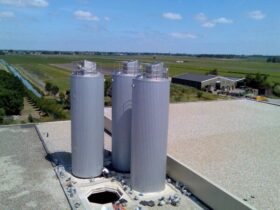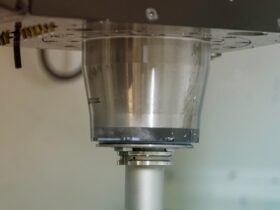Metal detectors are used in many industries, from jewelry to the food industry. They detect small particles of metals using the coils wounded up to their nonmetallic frame and connected to a radio transmitter. If any metal particle passes through its aperture, it will lead to the transmission of electromagnetic signals, which will change the output signal. This shows that there is metal underneath the metal detector.
They have different frequencies, which can detect different types and sizes of metals. Your goal is to choose the frequency that ensures higher detection. But note that there is no perfect frequency for the product, and this can lead to errors.
In the modern age, hobby-grade detectors are used when hunting for many things ranging from coins to jewelry such as gold. Most hunters look for coins, and when they encounter one, the metal detector will produce a beeping sound to alert them. It will help you reduce the time you spend while looking for precious metals.
How Do Metal Detectors Work?

The frequency is the number of waves per unit; it is measured in kilohertz or kHz. The frequency in metal detectors is the number of electronic waves sent to detect the metal beneath it. For instance, if you use 20 kHz, the detector will send and receive 20,000 waves per second.
Importance of Frequency in Metal Detectors
Frequency is used by metal detectors like beat frequency oscillator and pulse induction. These devices use the frequency of pulses or electronic fields sent to the ground to detect metals. Additionally, note that the different frequencies come with their benefits and drawbacks when detecting metals. They use an average of 3 to 100Khz frequency during their work.
Types of Metal Detector Frequencies
1. Very Low Frequency (VLF) Metal Detectors
VLF Metal detectors are the common type in the market and are ideal for beginners. They have two coils: one coil for the receiver and another one for the transmitter. The transmitter relays signal to the ground, and if there are metals in their range, they will send a response signal sent to the control box. You will receive a notification in the form of a beep, tone, or many beeps and see the target on a visual display.
2. Multi-Frequency Metal Detectors
VLF metal detectors only operate within a single frequency and will therefore limit you. On the other hand, the multi-frequency metal detectors can simultaneously use many frequencies, allowing you to detect different metals in varying depths.
But also note that there is a difference between selectable frequency and multi-frequency metal detectors. The former only allows you to use one frequency at a time, but the latter allows the use of over one frequency.
3. Pulse Induction Metal Detectors
Unlike the other metal detectors, this one uses one coil for transmitting and receiving the electrical currents. It releases the currents in pulses with a short duration. When the field reverses and collapses, then the delays show that the device has detected metal.

Where to go for Metal Detecting
Some of the popular public places where you will hunt for treasures are public schools, beaches, woods, public parts, and private properties. But before you start looking for metals, you need to get permission from the owners or the authorities. It’s not ethical to go hunting without permission, even if it’s public property; ask the mines department or government for advice before starting your forays.
Also, when hunting, be on the lookout for signs or posters of private properties. You’ll not want to trespass on someone’s property. But since private properties are the best places to look for metals, you should ask for permission from the owners first. For the public property, I would recommend getting written permission to carry throughout your hunting trip.
Bottom-line
Though we all think that the best metal detector is the one, which can run low and high frequency simultaneously, this is not always the case. Metals can show different reactions based on their sizes, and even metal alloys also have varying reactions. Don’t also forget that the shape, position, and orientation of the metal can influence the outcome of signals from your metal detector.
So, what’s the best frequency to use when detecting metals: you already know the answer; it is a different type of frequency.














Multi-frequency technology is an undeniable breakthrough. Almost all brands have already released pilot versions with this technology.